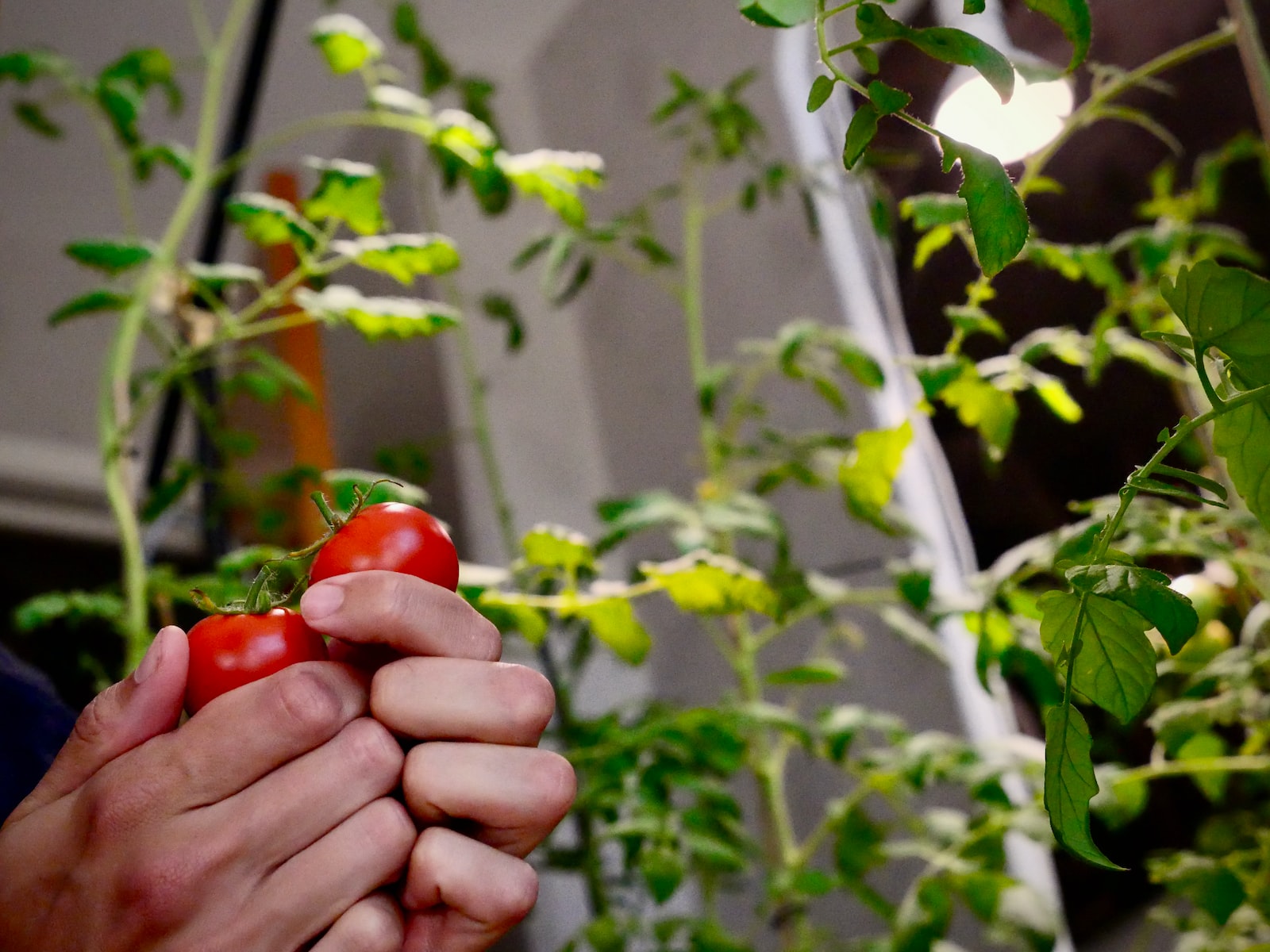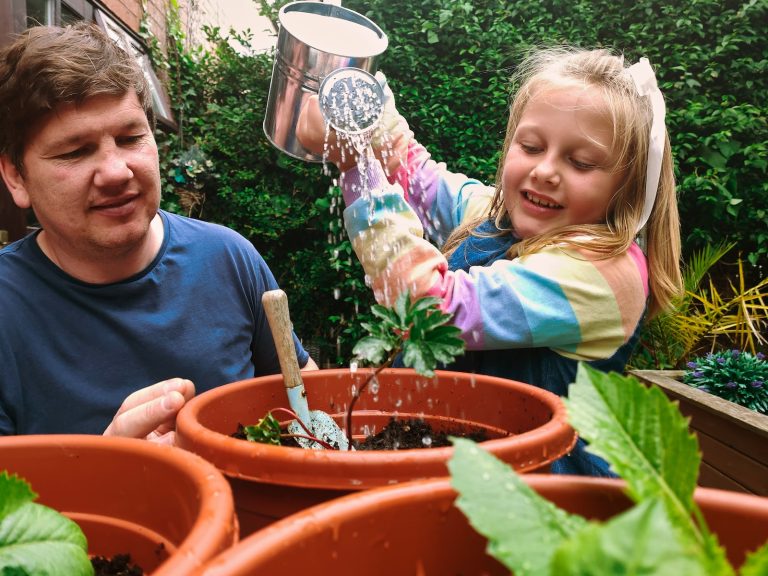How to Grow Tomatoes in Your Home Garden

Do you dream of plucking sun-ripened tomatoes from your very own garden? There’s nothing quite as satisfying as growing your own produce, and tomatoes are one of the easiest and most rewarding crops to cultivate.
From selecting the right varieties for your climate to nurturing them through every stage of growth, we’ve got all the tips and tricks to help you yield an abundant tomato harvest that will have your taste buds singing with joy. So roll up your sleeves and let’s get started on this delicious gardening adventure!
Grow Tomatoes at Home
Sure, you can buy tomatoes at the store, but there’s nothing quite like the taste of a fresh, homegrown tomato. Not to mention, growing your own tomatoes is much cheaper than purchasing them from the grocery store.
If you’re looking for a fun and rewarding gardening project, give growing tomatoes a try! Here are a few reasons why you should grow tomatoes at home:
Tomatoes are relatively easy to grow: Compared to other vegetables, tomatoes aren’t particularly difficult to grow. As long as you provide them with plenty of sunlight and water, they should thrive.
You can control the quality of your tomatoes: When you grow your own tomatoes, you can be sure that they haven’t been sprayed with harmful chemicals. You also have the ability to control the level of ripeness, so you can pick them when they’re perfectly ripe and delicious.
Homegrown tomatoes taste better than store-bought ones: This is perhaps the most compelling reason to grow your own tomatoes! Store-bought tomatoes are often picked before they’re ripe and then shipped long distances, which can affect their flavor.
Choosing Your Tomato Variety
With so many different varieties of tomatoes to choose from, it can be tough to decide which one to grow in your home garden. Here are a few things to consider when choosing your tomato variety:
-Determinate or indeterminate? Determinate varieties produce all of their fruit at once, while indeterminate varieties produce fruit throughout the season. If you want a continuous supply of fresh tomatoes, go with an indeterminate variety.
-Which color do you prefer? Tomatoes come in a range of colors, from traditional red to yellow, orange, and even purple. Choose the color that you think looks best or that you think will taste the best.
-What size do you want? Tomatoes come in all different sizes, from small cherry tomatoes to large beefsteak tomatoes. Decide how you want to use your tomatoes (slicing for sandwiches, dicing for salads, etc.) and choose a size accordingly.
-Which shape do you prefer? Tomatoes can be round, oval, or oblong. Again, this is mostly a matter of preference. Pick the shape that you think looks best or that will work best for your intended use.
Preparing the Soil for Planting
The first step in growing tomatoes is to prepare the soil. Tomatoes need a well-drained, fertile soil to grow well. You can improve your soil by adding organic matter such as compost or manure. If your soil is heavy clay, you may also want to add sand to improve drainage.
Once you’ve prepared the soil, it’s time to start planting. Tomatoes can be planted either from seed or from transplants. If you’re planting from seed, sow the seeds indoors about 6-8 weeks before the last frost date in your area. Transplants can be planted outdoors after the last frost date.
When planting, be sure to space the plants 18-24 inches apart so they have room to grow. Water the plants deeply and regularly, especially during dry spells. Add a layer of mulch around the plants to help retain moisture and control weeds.
Planting Tips and Tricks
When it comes to planting tomatoes, there are a few things you should keep in mind to ensure a bountiful crop. First, make sure to choose a location that gets plenty of sunlight throughout the day. Tomatoes need at least 6-8 hours of sunlight per day to produce fruit.
If you’re growing tomatoes in containers, be sure to use a high quality potting mix made for vegetables. It’s also important to water regularly, as tomatoes are susceptible to root rot and other problems if they don’t have enough moisture. Fertilize every few weeks with an all-purpose garden fertilizer to give your plants a boost.
Finally, don’t forget about supports! Tomatoes can get heavy as they mature, so provide them with cages or staking to keep them from toppling over. With proper care, you’ll be rewarded with delicious homegrown tomatoes in no time!
Watering and Feeding Tomatoes
Watering and feeding are crucial elements of growing healthy tomatoes. Too little water and your plants will suffer from stress and eventually die. tomatoes need at least 1 to 2 inches of water per week, applied evenly throughout their growing season.
You can use a soaker hose or drip irrigation system to deliver water directly to the roots, where it’s needed most. If you’re using fertilizer, be sure to follow the directions on the package. Over-fertilizing can damage your plants and reduce yields.
Apply fertilizer when you first plant your tomatoes, then again when they start to bloom and set fruit. A general-purpose fertilizer that contains both nitrogen and phosphorus will work well.
Support and Prune Tomatoes
Pruning your tomatoes will help them to produce more fruit and to be less susceptible to disease. When pruning, you should remove any leaves that are yellow or brown, as well as any stems that are damaged or diseased.
You should also remove any suckers that are growing from the main stem of the plant. To support your tomatoes, you can either use cages or stakes. Stakes are typically used for determinate varieties of tomatoes, while cages can be used for either determinate or indeterminate varieties. When using cages, make sure to select ones that are tall enough to support the plants as they grow.
When tying the plants to the stakes or cages, make sure to tie them loosely, so that they do not become too constricted. Once your tomatoes reach their desired size, you can prune off any additional growth at the top of the plant to prevent flowers from forming and redirect the energy into producing more fruit.
Pest and Disease Management
Pests and diseases can be a significant problem when growing tomatoes in your home garden. There are a number of different pests that can attack tomatoes, including aphids, whiteflies, and tomato hornworms. Diseases that affect tomatoes include blights, wilt, and root rot.
Aphids are small, soft-bodied insects that feed on the sap of plants. They are typically green or black in color and can be found feeding on the undersides of leaves. Aphids can cause stunted growth and distorted leaves.
Whiteflies are small, winged insects that resemble moths. They infest vegetables and fruits, causing them to turn yellow and drop prematurely. Tomato hornworms are large caterpillars that feed on the foliage and fruit of tomato plants. Hornworms can mature to be up to 4 inches long and cause serious damage to a tomato crop if left unchecked.
Blights are fungal diseases that affect the leaves and fruits of tomato plants. Blight symptoms include brown or black spots on the leaves and fruits, as well as wilting and premature leaf drop.
Wilts are viral diseases that cause the leaves of affected plants to turn yellow or brown and wilt. Root rot is caused by fungi that attack the roots of tomato plants, causing them to become waterlogged androt. Root rot can lead to plant death if left untreated.
Preventing pests and diseases from becoming a problem in your home garden starts with choosing disease-resistant varieties of tomatoes, maintaining good garden hygiene, and providing adequate air circulation and spacing between plants.
Proper watering and fertilization can also help stop the spread of pests and diseases. Additionally, regular monitoring of your tomato plants for signs of disease or pest infestations is key to preventing major outbreaks. If an infestation does occur, there are a variety of chemical or organic controls that can be used to manage it.
Harvest Time: Enjoy the Fruits of Your Labor!
Summer is winding down, but there’s still time to enjoy the fruits of your labor! If you’ve been growing tomatoes in your home garden, now is the time to harvest them. Here are a few tips to help you make the most of your crop:
- Check for ripeness. The best way to tell if a tomato is ripe is by checking the color. Ripe tomatoes should be deep red or orange, depending on the variety. You can also gently squeeze the fruit to see if it gives slightly.
- Cut, don’t pull. Once you’ve determined that your tomatoes are ripe, use a sharp knife or pruning shears to cut them from the plant. Avoid pulling on the fruit, as this can damage the plant and make it more susceptible to disease.
- Handle with care. Ripe tomatoes are fragile, so handle them with care when you’re transporting them from the garden to your kitchen. Place them in a single layer on a tray or in a basket lined with paper towels or newspaper.
- Enjoy! There’s nothing like fresh-picked tomatoes straight from the garden! Add them to salads, sandwiches, pasta dishes, or enjoy them simply sliced and served with some salt and pepper. Whatever you do, make sure you savor every last bite of your delicious homegrown tomatoes!
Conclusion
Planting tomatoes in the garden is an incredibly rewarding experience. Not only will you be able to enjoy freshly harvested, delicious vegetables for months on end, but you’ll also have the satisfaction of knowing that you grew them yourself!
Using our tips for how to grow tomatoes, you’ll soon see beautiful and hearty plants emerge from your garden with delectable fruits as a reward. Whether growing indoors or outside, we wish every gardener success and enjoyment during their tomato-growing journeys.
James is a passionate writer and gardener with years of experience in home gardening. He is the author of several articles and blog posts on HomeGardenBlog.com, a platform where he shares his expertise and love for plants and gardening with the world.






